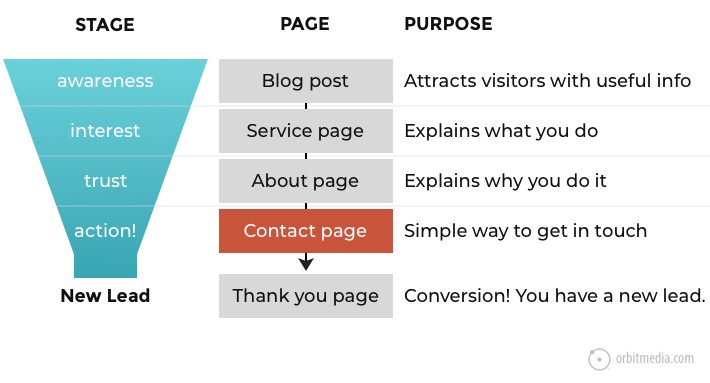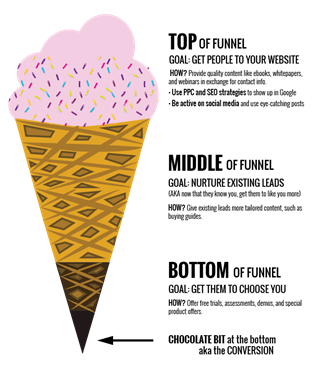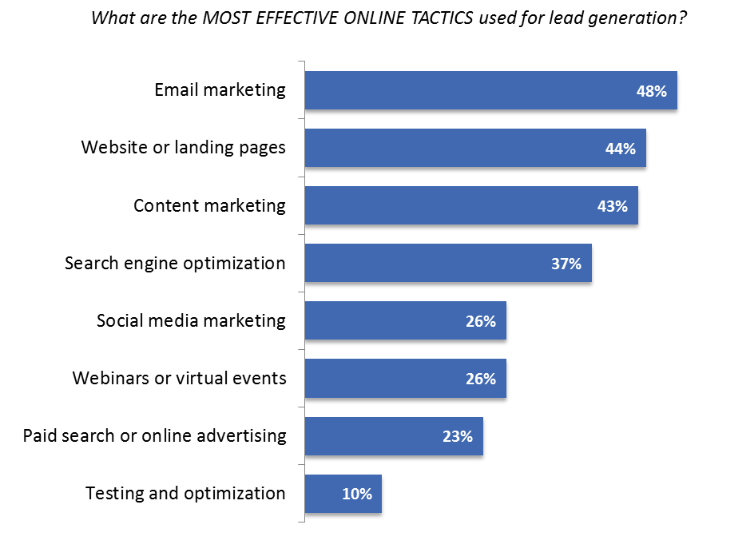
Are you looking to boost your business’s online presence and generate more leads? If so, then you’ve come to the right place. In this article, we will explore a variety of effective strategies that can help your lead-generation website thrive. From optimizing your website’s design and content to implementing compelling call-to-actions, we will provide you with valuable insights and practical tips to attract and convert potential leads. Get ready to take your online marketing efforts to the next level with these actionable strategies!

Crafting an Effective Landing Page
A landing page is the first impression your website makes on visitors, and it plays a crucial role in converting them into leads. To craft an effective landing page, you need to focus on several key elements.
Minimalist Design
A minimalist design is essential for a landing page. By keeping the layout clean and clutter-free, you can create a visually appealing and easy-to-navigate page. Use ample white space, choose a simple color scheme, and limit the number of elements on the page to avoid overwhelming your visitors.
Compelling Headline
The headline on your landing page should be attention-grabbing and communicate the value proposition of your product or service. A compelling headline entices visitors to stay on your page and explore further. Remember to keep it concise and focused on the benefits you offer.
Clear Call to Action
A clear and prominent call to action (CTA) is vital for converting visitors into leads. Make sure your CTA stands out and communicates what action you want visitors to take. Use action-oriented language and place the CTA above the fold, so it’s easily accessible without scrolling.
User-Friendly Form
Your landing page should include a user-friendly form that collects important information from your visitors. Keep the form fields to a minimum and only ask for essential details. Make sure the form is easy to fill out and consider using inline validation to guide users through the process. A mobile-friendly design is also crucial for ensuring a seamless experience for users accessing your landing page on their smartphones or tablets.
Optimizing Website Navigation
Optimized website navigation is key to providing a positive user experience and guiding visitors through your website effectively.
Clear and Intuitive Menu
The menu on your website should be clear and intuitive, making it easy for visitors to find the information they’re looking for. Use concise and descriptive labels for menu items, and organize them logically. Consider using dropdown menus for categories with sub-pages to avoid cluttering the main navigation bar.
Well-Structured Internal Links
Internal linking is an important aspect of website navigation and SEO. Make sure your internal links are well-structured and logical, guiding visitors to related and relevant content. Use descriptive anchor text that indicates what information visitors can expect when they click on a link.
Search Functionality
Including a search function on your website enables visitors to quickly find specific information they’re interested in. Make sure the search bar is easily visible and accessible from any page on your site. Implement autocomplete suggestions or search filters to enhance the user experience and help visitors find what they’re looking for more efficiently.
Mobile-Friendly Design
With an increasing number of people accessing websites on their mobile devices, it’s crucial to optimize your website for mobile users. Ensure that your website is responsive and displays correctly on various screen sizes. Mobile-friendly design not only enhances the user experience but also contributes to better search engine rankings.
Creating Relevant and Valuable Content
Creating relevant and valuable content is essential for attracting and engaging your target audience.
Identifying Target Audience
Before creating content, it’s important to identify your target audience. Understand their pain points, interests, and preferences to create content that resonates with them. Conduct market research, analyze your current customer base, and use tools like buyer personas to gain insights into your target audience.
Keyword Research and Optimization
Keyword research helps you identify the terms and phrases that your target audience is searching for. Use keyword research tools to find relevant keywords and incorporate them strategically into your content. Optimize your titles, headings, and meta descriptions with target keywords to improve your website’s visibility in search engine results.
Blogging and Social Media Integration
Blogging and social media integration are effective ways to share valuable content with your audience. Write informative blog posts, answer frequently asked questions, and provide insights and tips related to your industry. Promote your blog posts and other content on social media platforms to reach a wider audience and increase engagement.
Offering Free Resources
Providing free resources, such as ebooks, whitepapers, or templates, can attract potential leads and establish your credibility as an industry expert. Offer valuable content in exchange for visitors’ contact information to build your email list and nurture leads through targeted email marketing campaigns.
Implementing Effective Lead Capture Forms
Lead capture forms are essential for gathering valuable information about your leads. Optimizing these forms ensures a seamless conversion process.
Form Placement and Visibility
Place your lead capture forms strategically on your website to maximize visibility. Consider placing forms above the fold on your landing pages or in prominent positions on other relevant pages. Test different placements to determine what works best for your audience.
Optimizing Form Fields
Keep your lead capture forms short and request only the necessary information. Minimize the number of form fields to reduce friction and increase the chances of conversion. Use smart form fields that auto-fill information whenever possible, making it easier for visitors to complete the forms.
Progressive Profiling
Implement progressive profiling to collect additional information about your leads over time. Instead of bombarding visitors with all the questions at once, gradually gather more details with each interaction. This approach reduces form abandonment and allows you to tailor your marketing efforts based on the information you gather.
Personalization and Segmentation
Personalize your lead capture forms with dynamic content based on your visitors’ characteristics or behaviors. By segmenting your audience, you can deliver more relevant and customized experiences, increasing the chances of converting leads into customers.

Using Calls to Action to Drive Conversions
Calls to action (CTAs) play a crucial role in driving conversions on your website. Employing effective CTAs can significantly impact the success of your lead-generation efforts.
Creating Compelling CTAs
Craft CTAs that are compelling, and action-oriented, and create a sense of urgency. Use persuasive language and highlight the benefits visitors will receive by taking the desired action. Experiment with different CTAs to find the most effective variations for your audience.
Strategic Placement of CTAs
Strategic placement of CTAs ensures that they are visible and easily accessible to your visitors. Consider placing CTAs in prominent positions on your landing pages, blog posts, and other relevant pages. Use different formats, such as buttons, banners, or pop-ups, to capture attention.
A/B Testing CTAs
A/B testing allows you to compare the performance of different CTAs and optimize them for better conversions. Test different variations of CTAs, including different colors, wording, or positions, to determine which ones resonate best with your audience. Analyze the results and refine your CTAs accordingly.
Analyzing and Optimizing CTAs
Regularly analyze the performance of your CTAs to identify areas for improvement. Track click-through rates, conversion rates, and user behavior on pages with CTAs. Use this data to optimize your CTAs, refine your messaging, and continually improve your lead generation efforts.
Leveraging Social Proof to Build Trust
Social proof serves as a powerful tool to build trust among your website visitors and increase their confidence in your brand.
Customer Testimonials
Customer testimonials showcase real-life experiences and positive feedback from your satisfied customers. Display testimonials strategically on your website, preferably on landing pages and other high-traffic pages. Include names, job titles, and photos to add credibility and authenticity.
Case Studies and Success Stories
Case studies and success stories illustrate how your product or service has benefited specific customers. Share compelling stories that demonstrate the value you provide and the results you’ve achieved. Highlight measurable outcomes and emphasize the unique aspects of each case study.
Social Media Engagement
Engage with your audience on social media platforms to foster trust and build relationships. Respond promptly to comments, reviews, and messages, demonstrating that you value your customers’ opinions. Encourage happy customers to share their experiences on social media and engage with their content.
Trust Seals and Certifications
Display trust seals and certifications from reputable organizations to enhance your website’s credibility. These symbols indicate that your website is secure, follows industry best practices, and protects visitors’ privacy. Include trust seals prominently on your website, especially on pages where visitors are required to provide personal or financial information.

Maximizing the Power of SEO
Search engine optimization (SEO) is crucial for improving your website’s visibility in search engine results and attracting organic traffic.
Keyword Research and Optimization
Keyword research is the foundation of effective SEO. Identify relevant keywords and incorporate them strategically into your website’s content, including titles, headings, and body text. Optimize your URLs, alt tags, and image descriptions with target keywords to improve search engine rankings.
Optimizing Meta Tags and URLs
Craft informative and compelling meta tags, including your title tag and meta description, to entice users to click through to your website. Create unique and keyword-rich URLs that reflect the content of each page. Optimized meta tags and URLs improve your website’s visibility and click-through rates in search engine results.
Improving Website Loading Speed
A fast-loading website enhances the user experience and improves your search engine rankings. Optimize your images, compress files, and minimize the use of unnecessary scripts and plugins. Use a content delivery network (CDN) to distribute your website’s files across multiple servers, reducing load times for visitors from different locations.
Creating Engaging Meta Descriptions
Craft engaging and informative meta descriptions for your web pages. Meta descriptions appear below the title tag in search engine results and provide a summary of what visitors can expect on your page. Use compelling language, include relevant keywords, and emphasize the unique value your content offers to entice users to click through.
Harnessing the Potential of Email Marketing
Email marketing is a powerful tool for nurturing leads, building relationships, and driving conversions. Utilize these strategies to maximize its potential.
Building a Quality Email List
Build a quality email list by offering valuable content in exchange for visitors’ contact information. Use lead magnets, such as ebooks or webinars, to entice website visitors to subscribe to your emails. Ensure compliance with privacy and data protection regulations and offer clear opt-in and opt-out options.
Segmentation and Personalization
Segment your email list based on different criteria such as demographics, preferences, or buying behavior. Tailor your email content to each segment and personalize your messages to resonate with recipients. Use automation tools to send targeted and relevant emails at the right time.
Automated Email Campaigns
Implement automated email campaigns to nurture leads and guide them through the customer journey. Set up welcome emails, abandoned cart emails, or re-engagement campaigns to stay top of mind with your subscribers. Automated campaigns save time and allow you to deliver consistent and personalized messaging.
Monitoring and Analyzing Email Metrics
Regularly monitor and analyze email metrics to measure the effectiveness of your campaigns. Track open rates, click-through rates, conversion rates, and unsubscribe rates to gauge the engagement and success of your emails. Use this data to optimize your email content and refine your strategies.

Utilizing Live Chat for Immediate Interaction
Implementing live chat on your website enables immediate interaction with visitors, enhancing the customer experience and increasing the likelihood of conversion.
Installing Live Chat Software
Choose a reliable live chat software that aligns with your business requirements. Install the software on your website and customize it to match your brand’s aesthetics. Ensure that the chat window is easily accessible and unobtrusive.
Training Support Staff
Train your support staff to effectively use live chat and provide excellent customer service. Teach them how to address common inquiries, resolve issues efficiently, and engage with visitors in a friendly and professional manner. Emphasize the importance of timely responses and the ability to juggle multiple chat conversations.
Chatbot Integration
Integrate chatbots into your live chat system to automate responses to frequently asked questions or provide preliminary assistance. Chatbots can handle simple queries and gather basic information, freeing up your support team’s time for more complex inquiries. However, it’s crucial to strike a balance between automation and human interaction to avoid a robotic experience.
Analyzing Chat Data
Analyze chat data and metrics to gain insights into customer behavior, common pain points, and areas for improvement. Look for trends and patterns in chat transcripts to identify opportunities for optimizing your website, improving customer service, or addressing potential gaps in information.
Continuous Testing and Optimization
Continuous testing and optimization are crucial to ensure your lead generation strategies are effective and yield the desired results.
A/B Testing Landing Pages
Implement A/B testing to compare different variations of your landing pages and identify which elements drive the highest conversions. Test different headlines, colors, imagery, or form placements to determine which combinations resonate best with your audience. Analyze the data and iterate on your pages for continual improvement.
User Testing and Feedback
Conduct user testing and gather feedback from your target audience to understand their experience on your website. Identify any pain points, navigation issues, or confusing elements that may hinder conversions. Use this valuable feedback to enhance the user experience and optimize your lead generation efforts.
Conversion Rate Optimization
Conversion rate optimization (CRO) focuses on improving the percentage of visitors who take the desired action on your website. Analyze user behavior, engagement metrics, and conversion funnel data to identify areas for optimization. Make iterative changes to your designs, messaging, or user flows to maximize conversions.
Implementing Heatmap Analysis
Heatmap analysis provides visual insights into how visitors interact with your website. Heatmaps can show you which areas of a page receive the most attention, where users scroll, and which elements are being clicked. Use this data to refine your designs, optimize your call-to-action placements, and improve overall user experience.
By following these effective strategies for lead generation websites, you can optimize your website, drive conversions, and build meaningful relationships with your target audience. Remember to continually test, analyze, and optimize your efforts to stay ahead of the competition and achieve long-term success.
In conclusion, if you are seeking to revolutionize your lead generation strategies, then check out these three indispensable tools: Viral Inbox, the dynamic platform for managing your email marketing campaigns with precision; Getresponse, the trusted email marketing solution known for its powerful automation features; and Kwestify, the innovative tool for SEO-Optimization that helps you know what people are searching and asking Google. It is perfect for all keyword related actions in your niche and local area to enable you to capture leads and drive conversions. These tools boast user-friendly interfaces and robust functionalities, making them essential assets for any business seeking growth.
Explore more topics and gain insights on SEO Tips for your Niche Websites, Affilate marketing Strategies, niche podcast sponsorships plus our other related topics.
Feel free to use the comment section below to let us know more about your experience and questions. You can also subscribe to our mailing list for exclusive updates and content tailored just for you!”






1 thought on “Effective Strategies for Lead Generation Websites”